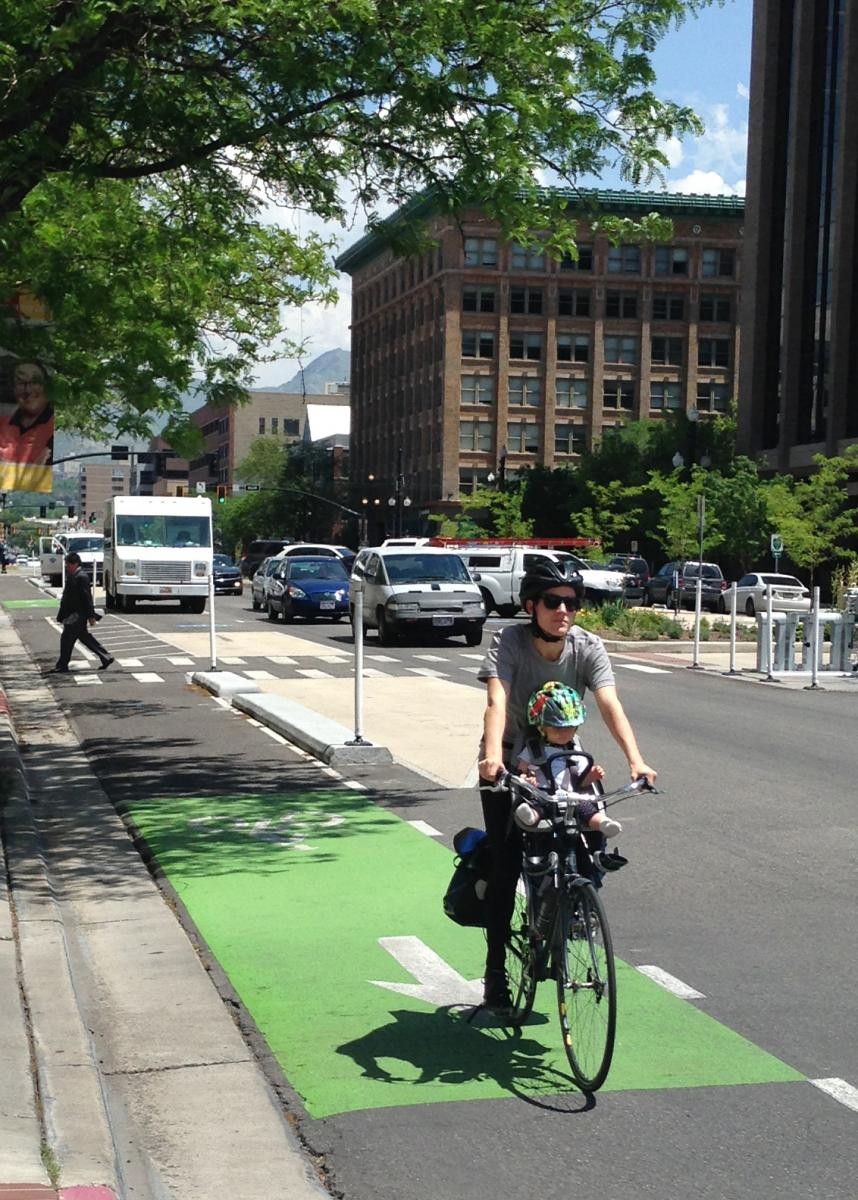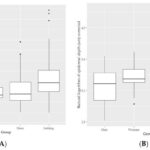Determining How Big Is Salt Lake City Compared To Other Cities involves considering multiple factors like population, land area, and economic influence. At COMPARE.EDU.VN, we provide comprehensive comparisons to help you understand these differences and make informed decisions. To gain a complete perspective, we will explore comparisons with major U.S. cities, delve into its regional context, and highlight how it stacks up against international urban centers, focusing on size, growth, and notable features.
1. Understanding Salt Lake City’s Size and Scope
1.1. What Is Salt Lake City’s Population and Land Area?
Salt Lake City has a population of roughly 200,000 residents within its city limits, and a land area of approximately 110 square miles (285 square kilometers). This places it as a mid-sized city compared to other major urban centers in the United States.
1.2. What Are Key Characteristics That Define Salt Lake City?
Salt Lake City is defined by several key characteristics that contribute to its unique identity:
- Location: Nestled in the Salt Lake Valley, bordered by the Wasatch and Oquirrh mountain ranges.
- Historical Significance: Founded by Mormon pioneers, it retains a rich historical heritage.
- Economic Hub: A major center for finance, healthcare, and technology in the Intermountain West.
- Outdoor Recreation: Proximity to world-class ski resorts and outdoor recreational opportunities.
- Cultural Scene: A growing arts and culture scene, including the Utah Symphony and various festivals.
2. Salt Lake City vs. Major U.S. Cities
2.1. How Does Salt Lake City Compare to New York City in Size?
Comparing Salt Lake City to New York City illustrates a significant disparity in size and population density.
| Feature | Salt Lake City | New York City |
|---|---|---|
| Population | Approximately 200,000 | Over 8.4 million |
| Land Area | 110 square miles (285 sq km) | 302.6 square miles (784 sq km) |
| Population Density | Approximately 1,800 per sq mi | Approximately 28,000 per sq mi |


New York City’s vast population and compact area result in a much higher population density, reflecting its status as a global metropolis.
2.2. Comparing Salt Lake City to Los Angeles: A Detailed Analysis
Los Angeles, another major U.S. city, presents a different set of comparisons for Salt Lake City.
| Feature | Salt Lake City | Los Angeles |
|---|---|---|
| Population | Approximately 200,000 | Nearly 4 million |
| Land Area | 110 square miles (285 sq km) | 469 square miles (1,214 sq km) |
| Economic Sector | Finance, Healthcare, Technology | Entertainment, Tourism, Technology |
| Key Industries | Outdoor Recreation, Government | International Trade, Manufacturing |
Los Angeles is a sprawling urban landscape with a diverse economy centered around entertainment and international trade.
2.3. Chicago vs. Salt Lake City: Understanding the Differences
Chicago, known for its architecture and cultural institutions, offers another point of comparison.
| Feature | Salt Lake City | Chicago |
|---|---|---|
| Population | Approximately 200,000 | Approximately 2.7 million |
| Land Area | 110 square miles (285 sq km) | 234 square miles (606 sq km) |
| Urban Planning | Grid System | Grid System with Lakefront Parks |
| Cultural Focus | Outdoor Activities, Historical Sites | Museums, Music, Theater |
Chicago’s extensive public transportation and vibrant cultural scene highlight its role as a major Midwestern hub.
2.4. How Does Salt Lake City Stack Up Against Houston?
Houston, Texas, is a sprawling city known for its energy industry and diverse population.
| Feature | Salt Lake City | Houston |
|---|---|---|
| Population | Approximately 200,000 | Over 2.3 million |
| Land Area | 110 square miles (285 sq km) | 665 square miles (1,722 sq km) |
| Economic Driver | Technology, Healthcare | Energy, Manufacturing, Aerospace |
| Urban Sprawl | Moderate | High |
Houston’s expansive layout and reliance on the energy sector contrast with Salt Lake City’s more compact form and diverse economy.
3. Regional Comparisons: Salt Lake City and Its Neighbors
3.1. Denver vs. Salt Lake City: A Mountain West Showdown
Denver, Colorado, is a key city in the Mountain West, often compared to Salt Lake City.
| Feature | Salt Lake City | Denver |
|---|---|---|
| Population | Approximately 200,000 | Over 700,000 |
| Land Area | 110 square miles (285 sq km) | 155 square miles (401 sq km) |
| Economic Strength | Technology, Finance | Aerospace, Technology, Tourism |
| Outdoor Access | Wasatch Mountains | Rocky Mountains |
Denver’s larger population and robust aerospace industry make it a significant regional player.
3.2. Comparing Salt Lake City to Boise, Idaho
Boise, Idaho, is a smaller but rapidly growing city in the Intermountain West.
| Feature | Salt Lake City | Boise |
|---|---|---|
| Population | Approximately 200,000 | Approximately 235,000 |
| Land Area | 110 square miles (285 sq km) | 85 square miles (220 sq km) |
| Growth Rate | Moderate | High |
| Main Industries | Healthcare, Finance | Technology, Agriculture |
Boise’s high growth rate and focus on technology and agriculture distinguish it from Salt Lake City’s more established economy.
3.3. What Are the Differences Between Salt Lake City and Las Vegas?
Las Vegas, Nevada, is known for its tourism and entertainment industries.
| Feature | Salt Lake City | Las Vegas |
|---|---|---|
| Population | Approximately 200,000 | Over 650,000 |
| Land Area | 110 square miles (285 sq km) | 135 square miles (350 sq km) |
| Primary Economy | Technology, Healthcare | Tourism, Entertainment |
| Climate | Four distinct seasons | Desert climate |
Las Vegas’s desert climate and reliance on tourism contrast with Salt Lake City’s more diversified economy and seasonal weather.
3.4. Phoenix vs. Salt Lake City: Size and Economic Influence
Phoenix, Arizona, is a large metropolitan area in the Southwest.
| Feature | Salt Lake City | Phoenix |
|---|---|---|
| Population | Approximately 200,000 | Over 1.6 million |
| Land Area | 110 square miles (285 sq km) | 517 square miles (1,340 sq km) |
| Major Industries | Finance, Technology | Healthcare, Finance, Manufacturing |
| Climate | Four distinct seasons | Desert climate |
Phoenix’s large population and expansive area reflect its status as a major Southwestern hub.
4. International Comparisons: Salt Lake City on a Global Scale
4.1. Comparing Salt Lake City to Toronto, Canada
Toronto, Canada, is a major international city with a diverse economy.
| Feature | Salt Lake City | Toronto |
|---|---|---|
| Population | Approximately 200,000 | Over 2.9 million |
| Land Area | 110 square miles (285 sq km) | 240 square miles (620 sq km) |
| Economic Focus | Technology, Healthcare | Finance, Technology, Media |
| Cultural Scene | Local Arts, Historical Sites | Multicultural, Diverse Cuisine |
Toronto’s multicultural environment and significant financial sector distinguish it from Salt Lake City.
4.2. How Does Salt Lake City Compare to Sydney, Australia?
Sydney, Australia, is known for its iconic landmarks and high quality of life.
| Feature | Salt Lake City | Sydney |
|---|---|---|
| Population | Approximately 200,000 | Over 5 million |
| Land Area | 110 square miles (285 sq km) | 4,700 square miles (12,170 sq km) |
| Main Attractions | Outdoor Activities, Temple Square | Opera House, Beaches |
| Economic Stability | Growing Technology Sector | Finance, Tourism |
Sydney’s expansive area and iconic landmarks reflect its status as a major global destination.
4.3. London vs. Salt Lake City: Understanding Urban Scale
London, England, is a historic city with a global economic influence.
| Feature | Salt Lake City | London |
|---|---|---|
| Population | Approximately 200,000 | Over 9 million |
| Land Area | 110 square miles (285 sq km) | 607 square miles (1,572 sq km) |
| Key Industries | Healthcare, Finance | Finance, Media, Tourism |
| Historical Depth | Mormon Heritage | Roman to Modern History |
London’s vast history and status as a global financial center contrast with Salt Lake City’s more regional focus.
4.4. Comparing Salt Lake City to Tokyo, Japan
Tokyo, Japan, is one of the world’s largest and most densely populated cities.
| Feature | Salt Lake City | Tokyo |
|---|---|---|
| Population | Approximately 200,000 | Over 13.9 million |
| Land Area | 110 square miles (285 sq km) | 845 square miles (2,187 sq km) |
| Public Transport | Developing | Highly Developed and Efficient |
| Cultural Significance | Mormon Influence | Ancient Traditions and Modern Pop Culture |
Tokyo’s advanced public transportation and unique blend of traditional and modern culture set it apart from Salt Lake City.
5. Growth and Development Trends
5.1. What Is the Growth Rate of Salt Lake City Compared to Other Cities?
Salt Lake City has experienced moderate growth compared to other cities in the U.S. and worldwide. According to recent data, its growth rate is steady, influenced by factors such as economic opportunities and quality of life.
5.2. How Does Urban Planning Impact the Size and Development of Salt Lake City?
Urban planning significantly shapes Salt Lake City’s size and development. The city’s grid system, established by its founders, facilitates organized growth. Recent planning initiatives focus on sustainable development, balancing population increase with environmental preservation.
5.3. What Are the Major Infrastructure Projects Influencing Salt Lake City’s Growth?
Major infrastructure projects, such as the expansion of the TRAX light rail system and improvements to the Salt Lake City International Airport, are key drivers of growth. These projects enhance connectivity and accessibility, attracting businesses and residents.
5.4. How Does Economic Development Contribute to Salt Lake City’s Size and Influence?
Economic development plays a crucial role in Salt Lake City’s size and influence. The city’s growing technology sector, coupled with its strong healthcare and finance industries, attracts investment and talent, contributing to its expansion and regional importance.
6. Lifestyle and Quality of Life
6.1. How Does the Cost of Living in Salt Lake City Compare to Other Cities?
The cost of living in Salt Lake City is generally lower than in major coastal cities like New York or San Francisco but comparable to other mid-sized U.S. cities. Housing costs and everyday expenses are relatively affordable, making it an attractive option for many.
6.2. What Are the Cultural and Recreational Opportunities in Salt Lake City?
Salt Lake City offers a rich array of cultural and recreational opportunities. From world-class ski resorts in the nearby Wasatch Mountains to a vibrant arts scene and historical sites like Temple Square, there’s something for everyone.
6.3. How Does Salt Lake City’s Proximity to Natural Landscapes Affect Its Appeal?
Salt Lake City’s proximity to natural landscapes significantly enhances its appeal. The easy access to outdoor activities such as skiing, hiking, and mountain biking attracts outdoor enthusiasts and contributes to a high quality of life.
6.4. What Is the Community and Social Environment Like in Salt Lake City?
Salt Lake City features a welcoming community and a unique social environment. Influenced by its historical roots, the city embraces diversity and offers a mix of traditional values and modern lifestyles.
7. Key Takeaways: Salt Lake City’s Unique Position
7.1. What Makes Salt Lake City Stand Out Compared to Other Cities?
Salt Lake City stands out due to its unique blend of urban amenities and access to outdoor recreation. Its growing economy, coupled with a relatively affordable cost of living, makes it an attractive place to live and work.
7.2. How Can Understanding City Comparisons Help in Decision-Making?
Understanding city comparisons can greatly assist in decision-making, whether you’re considering a move, planning a business expansion, or simply seeking a better understanding of different urban environments.
7.3. What Are the Future Prospects for Salt Lake City’s Growth and Development?
The future prospects for Salt Lake City’s growth and development are promising. With ongoing infrastructure improvements, a thriving economy, and a focus on sustainable development, the city is poised for continued success.
7.4. Where Can You Find More Detailed City Comparisons?
For more detailed city comparisons, visit COMPARE.EDU.VN, where you’ll find comprehensive data and insights to help you make informed decisions.
8. FAQs About Salt Lake City
8.1. What Is the Population Density of Salt Lake City?
Salt Lake City has a population density of approximately 1,800 people per square mile.
8.2. How Does Salt Lake City Compare to Other State Capitals?
Compared to other state capitals, Salt Lake City is a mid-sized city with a unique blend of urban and natural environments.
8.3. What Are the Major Industries in Salt Lake City?
Major industries in Salt Lake City include technology, healthcare, finance, and outdoor recreation.
8.4. What Is the Climate Like in Salt Lake City?
Salt Lake City has a four-season climate with hot summers and cold, snowy winters.
8.5. How Accessible Is Public Transportation in Salt Lake City?
Public transportation in Salt Lake City is developing, with a growing light rail system (TRAX) and bus network.
8.6. What Are the Best Neighborhoods to Live in Salt Lake City?
Popular neighborhoods in Salt Lake City include the Avenues, Sugar House, and Downtown, each offering unique amenities and lifestyles.
8.7. How Does Salt Lake City Support Sustainable Living?
Salt Lake City supports sustainable living through various initiatives, including promoting public transportation, investing in renewable energy, and preserving green spaces.
8.8. What Cultural Events Take Place in Salt Lake City?
Salt Lake City hosts numerous cultural events, including the Sundance Film Festival, the Utah Arts Festival, and various music and theater performances.
8.9. How Does Salt Lake City Compare in Terms of Safety?
Salt Lake City is generally considered a safe city, with crime rates comparable to other mid-sized U.S. cities.
8.10. What Educational Opportunities Are Available in Salt Lake City?
Salt Lake City offers a range of educational opportunities, including the University of Utah, Salt Lake Community College, and various private institutions.
9. Conclusion: Making Informed Comparisons with COMPARE.EDU.VN
Understanding how big is Salt Lake City compared to other cities involves considering factors such as population, land area, economic influence, and quality of life. Salt Lake City offers a unique blend of urban amenities and access to outdoor recreation, making it an attractive place to live and work.
Ready to make informed decisions? Visit COMPARE.EDU.VN for comprehensive city comparisons and detailed insights. Our platform provides the tools and information you need to compare cities across various metrics, ensuring you have the knowledge to choose the best option for your needs.
Contact us for more information:
Address: 333 Comparison Plaza, Choice City, CA 90210, United States
Whatsapp: +1 (626) 555-9090
Website: COMPARE.EDU.VN
Call to Action: Explore compare.edu.vn today and discover the possibilities!
